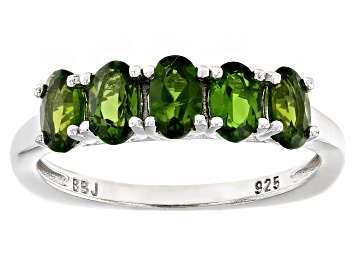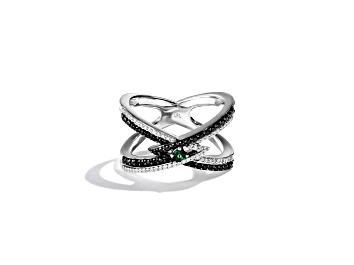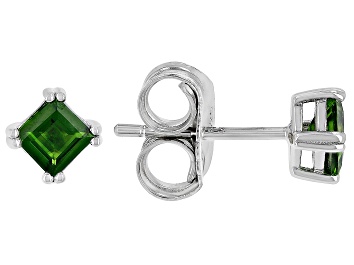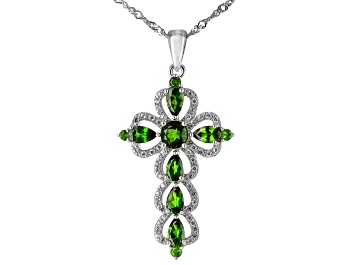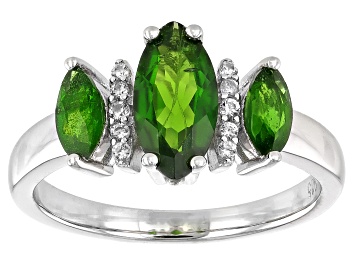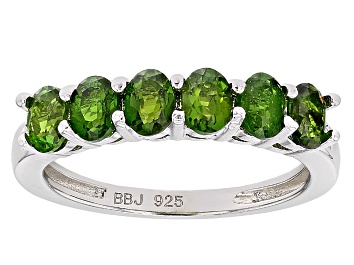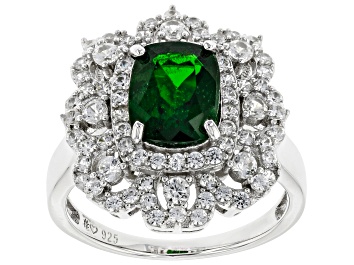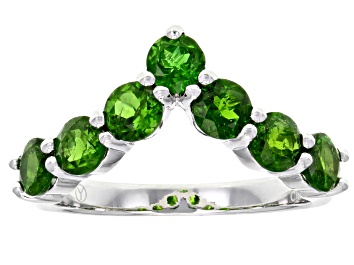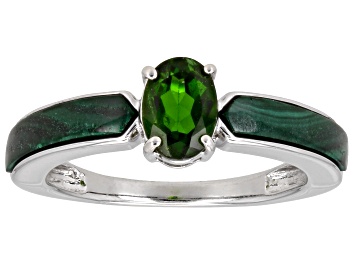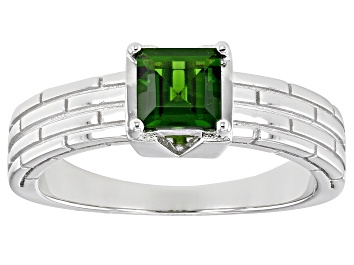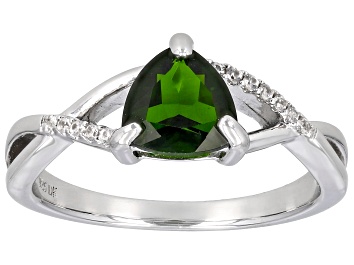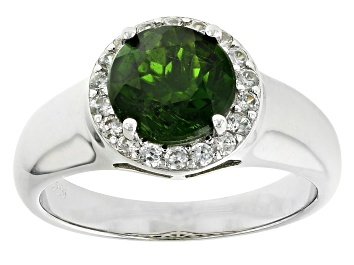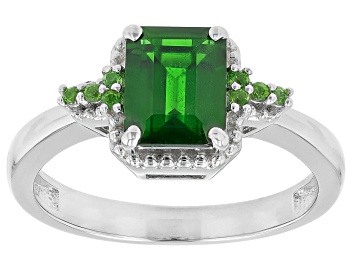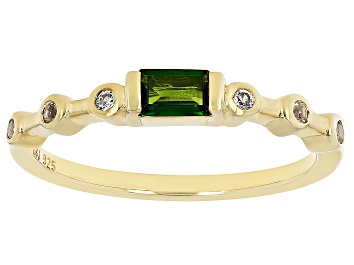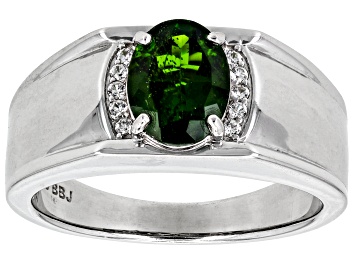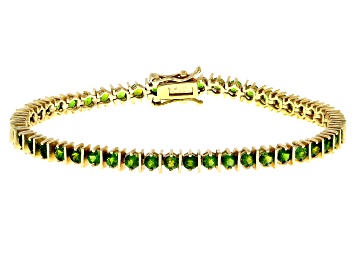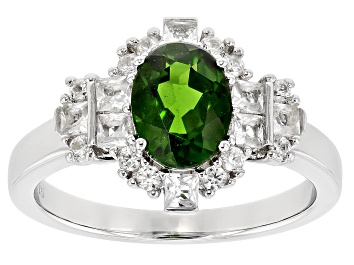If you appreciate unique rarities and like to set yourself apart from the crowd, chrome diopside is a must-have. This affordable emerald alternative is charming in its own right with an incomparable brown undertone and a rareness that makes it mysterious and increasingly valuable.
Hit Refresh With Chrome Diopside
Don't let this gem get lost in the forest of other green stones.
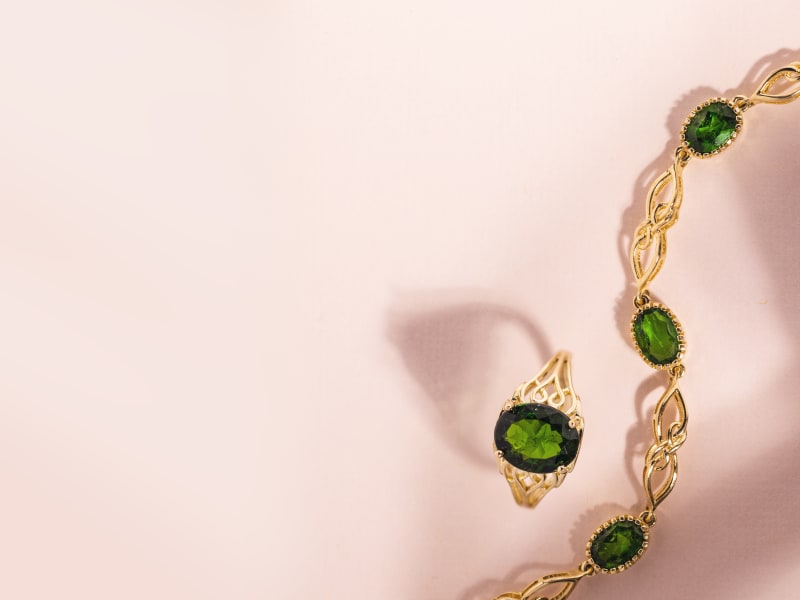
What is Chrome Diopside?
Chrome diopside, an earthy green that can range from transparent to opaque, is a semi-precious mineral that gets its emerald-like color from chromium. Despite this resemblance to emerald, there is actually no relation between the two gems.
Although people likely knew of chrome diopside before, it was officially “discovered” and widely used in jewelry during the late 1980s. The stone then became very popular during the 2000s.
Green lovers especially appreciate chrome diopside gems as a more affordable alternative to emerald, tsavorite garnet and tourmaline.
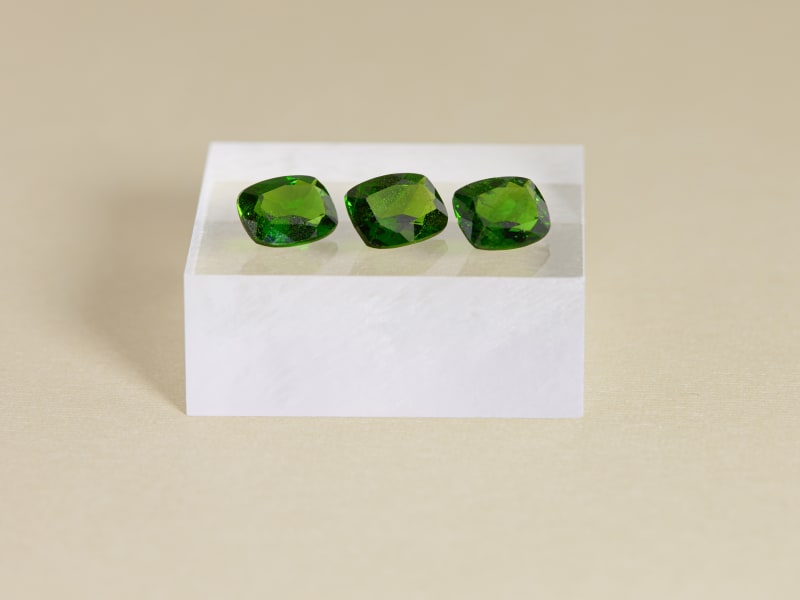
The Rarity of Chrome Diopside
The most intriguing fact about chrome diopside is its rarity, which is only increasing. Although chrome diopside material is technically found in places all over the world, gem-quality specimens of this stone have only been found in one small area of Siberia.
Though JTV will continue to provide gorgeous chrome diopside jewelry for as long as possible, after the Siberian supply runs out, the future of chrome diopside is uncertain. Unless another gem-quality supply is discovered somewhere, the stone will eventually become rare — and likely more valuable.
The Meaning of Chrome Diopside
If you are someone who believes in the spiritual power of gemstones, you will certainly want to add some chrome diopside to your collection. The greenish-brown stone supposedly has a reinvigorating influence. It is said to refresh your energy, as well as your desire and ability to learn and be creative.
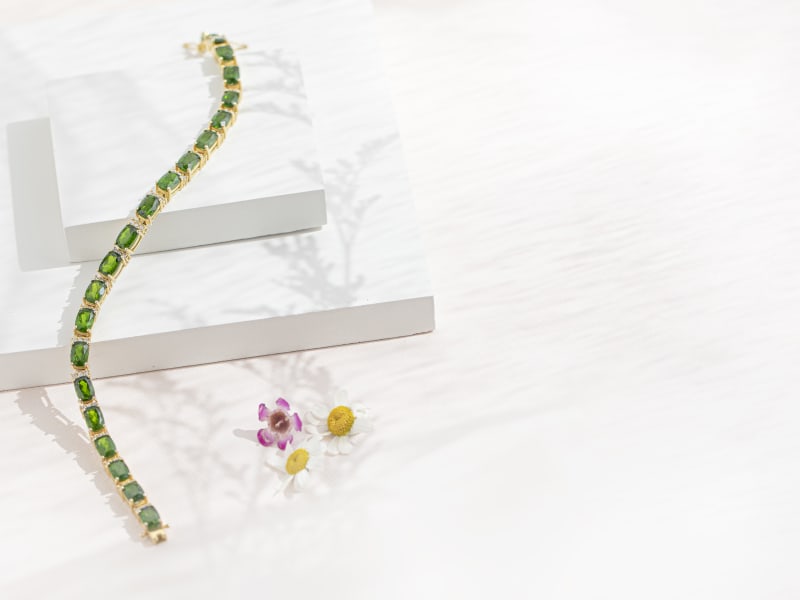
How to Style Chrome Diopside
Chrome diopside jewelry’s unusual vibrant, brownish-green color may appear difficult to style. But statement-making colors always pair well with neutrals, such as black, white or tan. The color can be festive with silver, gold or both, or match a spring or summer look with yellow, purple or dark pink.

How to Take Care of Chrome Diopside
Chrome diopside errs on the softer side of the Mohs Hardness Scale at 5.5-6.5. When your jewelry requires a cleaning, only use a soft brush and lukewarm water with a mild soap to gently wash. Avoid ultrasonic and steam cleaners, and any kinds of harsh chemicals.
When you remove your jewelry for the day, you should also store it separately from other accessories. Many other gemstones such as diamond, sapphire and ruby have a higher hardness level and will scratch your chrome diopside if they come into contact with it.

Now that you understand all of the basics when it comes to wearing and maintaining chrome diopside jewelry, you’re ready to pick out the accessory that speaks to you!
Frequently Asked Questions About Chrome Diopside
Is chrome diopside an expensive stone?
Chrome diopside is the most affordable of all the gemstones with a natural vibrant green color.
Is chrome diopside a real stone?
Yes, people have known of chrome diopside for comparatively less time than many other stones, which have been widely used for thousands of years, but it is a real semi-precious mineral and not a synthetically created gem.
Is chrome diopside a rare gem?
Yes, chrome diopside is a rare gemstone. Currently, gem-quality specimens are only found in one area of the world, and once that supply runs out, they will become even more rare unless another is located.
Additional Chrome Diopside References
Erin McIntyre
Erin loves researching and writing about unusual, rare items, and chrome diopside certainly fits the bill.
Read more about Erin on her author page
Elizabeth Benbrook and Holly Evans contributed to this article.



